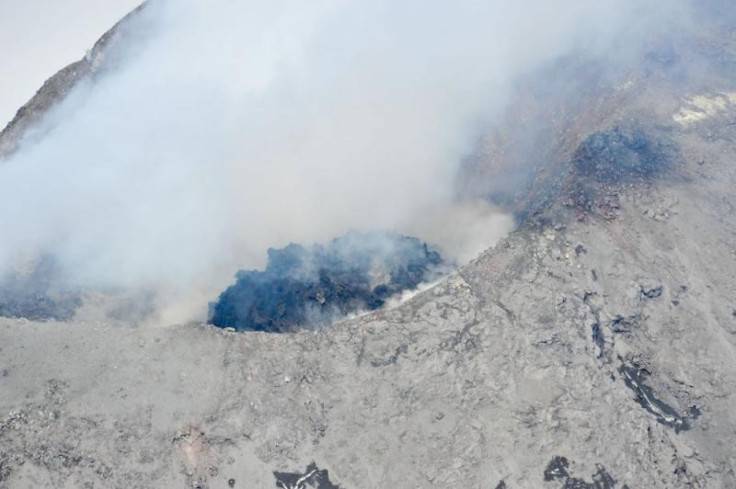Cleveland Volcano Erupting in Alaska [PHOTOS]

The remote Cleveland Volcano, in Alaska's Aleutian chain, began erupting last week, but currently poses little threat to people or aircraft, officials said on Tuesday.
According to John Power, the scientist-in-charge at the Alaska Volcano Observatory, the eruption at Cleveland Volcano is a slow effusion of magma that's forming a lava dome. Consequently, it isn't an explosive eruption and is unlikely to generate large plumes of ash.
The Alaska Volcano Observatory first reported the eruption a week ago, when satellite images showed that the lava dome on the volcano's summit was widening from 131 feet to 164 feet.
As it stands, the lava dome is confined within the summit crater and, according to scientists at the Observatory, the biggest danger would be if the dome began to grow large enough to spill over -- that's when it could begin generating ash-producing explosions.
The 5,676-foot Cleveland Volcano, like others in the Aleutian chain, lies directly below the commercial airline flight path between North America and Asia. Consequently, a major eruption could severely disrupt international air travel.
"So far, it's just lava as far as we can tell from our satellite imagery and the people who have managed to see it from passing airplanes," Power, the scientist, told Bloomberg. "If it were to explode and push a bunch of ash up into the flight levels, then it would be much more dangerous situation. It's something we're going to be watching very closely, or as close as we can, given our operational constraints here."
Because the volcano is in a very remote area 939 miles southwest of Anchorage on the uninhabited Chuginadak Island, the danger levels are low and there is no real-time seismic network in place.
Due to the expense, it is unlikely that scientists will fly over the volcano given its current activity. For now, they must rely on satellite imagery or photos sent to the observatory that were snapped from airplanes as they passed over the volcano.
Cleveland last showed signs of unrest one year ago, with a small ash emission and lava flows on its upper flanks. According to the Observatory, the last major eruption began in February 2001 and produced a flow of lava that reached the ocean.
Whether the eruption will fizzle out or grow is uncertain.
Dome-building events have preceded big explosive eruptions at other Alaska volcanoes, including Redoubt Volcano near Anchorage. Redoubt's 2009 eruption disrupted offshore oil production and caused numerous flight cancellations.
© Copyright IBTimes 2024. All rights reserved.












